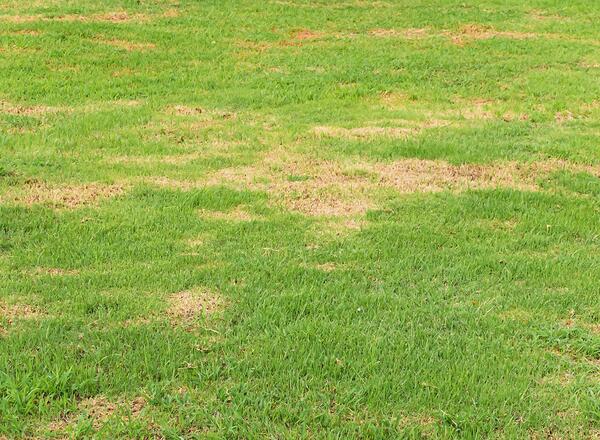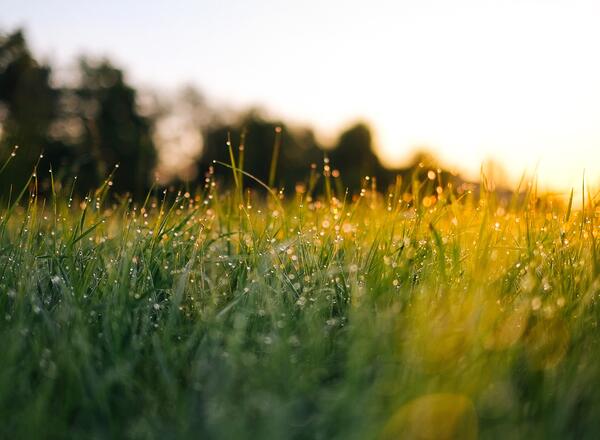A soil test can help reveal nutrient deficiencies, soil pH, organic matter content, and more. Learn more about conducting a soil test. When soil problems exist under a lawn, there are ways to address them without tearing up the lawn. Core aerifying is suggested for problems such as thatch and soil compaction. Core aerifying machines will pull up numerous plugs of soil, making holes in the lawn. Allow the plugs to remain on the soil surface. Aerifying, overseeding, and slit-seeding (breaking up cores) may be an ideal level of renovation for many lawns. When soil problems exist, organic matter used as a topdressing can begin to rebuild soil structure. This becomes an important part of the reseeding process. In these situations, core aeration should be done first, topdressing second. This allows organic matter direct access into the soil profile.
Unfortunately, some lawn problems, such as soil problems of severe compaction, high clay levels, or poor drainage, require starting over. To do this, remove existing grass or rototil it into the soil. You will want to introduce organic matter into the heavy soils.
High populations of perennial weeds may require the use of a nonselective herbicide such as glyphosate.
If a soil test indicates deficiencies that can be remedied via amendments this often will require the use of a tiller. Thoroughly work the soil to a depth of six inches. This depth may not be possible if you have shade trees in the area. You should not disturb the root system. In these cases, lightly working the soil enough to sow the seed and using an organic matter as topdressing is the best you can do. Add amendments such as compost, rotted manure, organic topsoil, or peat, and thoroughly work into the soil profile. Follow proper selection and establishment procedures to get the new lawn off to a good start.

